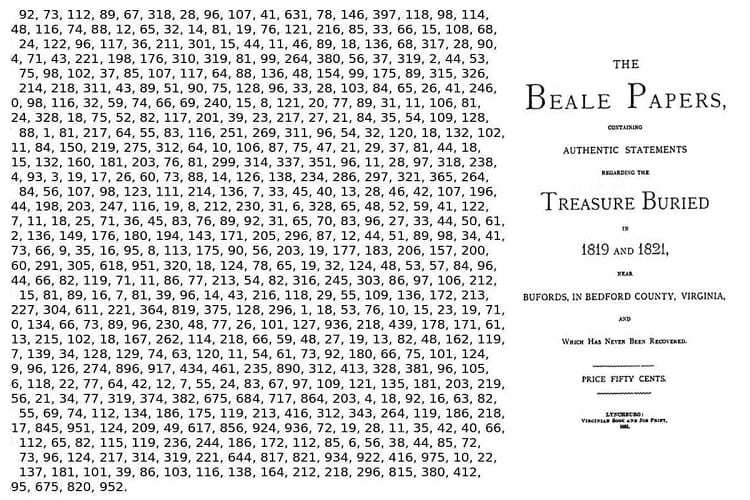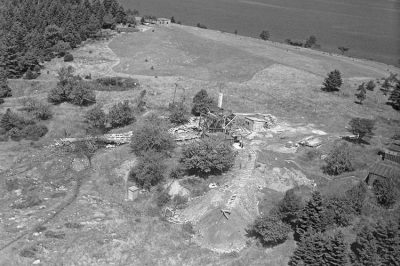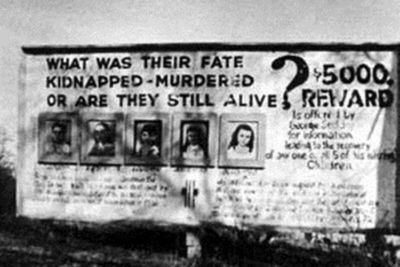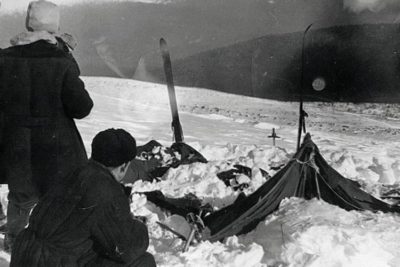The Fascinating Tale of the Lost Treasure of the Beale Ciphers
Share

Beale Papers. (Wikimedia Commons)
If the Beale Ciphers are to be believed, it is prime time to rewrite American history. The Beale Papers narrate a captivating story that has become an integral part of the Virginia legend. A thrilling tale of adventure, lost treasure trove, early bonanza and secret codes that significantly remain obfuscated till current times.
Discovery of the vast treasure trove
In the year 1817, Thomas Jefferson Beale, who was a Virginian native, along with the comradeship of thirty other adventurous companions set out for hunting buffaloes and grizzlies in the western part of America.
Quite by an accident, in the following year, Beale’s party unearthed a fabulous and massive treasure of silver, gold and jewels about 300 miles north of Santa Fe. This discovery happened thirty years prior to the great gold strike in California. The buried treasure is estimated to be worth more than US $54 million as of currency value in January 2018.
Beale and his compatriots decided to work together and distribute the treasure equally. With the thought of protecting the huge reserve of wealth and ensuring their own safety, they chalked out a comprehensive plan to hide the treasure.
The concealment strategy comprised of three ciphertexts. The first ciphertext described the location of the treasure. The second one contained information about the constituents of the treasure. The third ciphertext tabulated the treasure owners’ names and details about their next of kin.
The fortune was then transported by wagons in two episodes to Virginia. It was then concealed and fortified in a rock-made vault dug up in the ground.
Sequence of events
The decision to hand over the documents to a confidante
Beale’s comrades were worried that if they would meet with an accident and die, the secret treasure would never find its way to their loved ones.
Therefore, they urged Beale to solicit the service of a reliable person who could be entrusted to fulfil their wishes in the eventuality of their unforeseen death. And for Beale, Morris was the only chosen one.
Handing over the box to Robert Morris
Beale secured the ciphertexts of three encoded letters and a few other confidential papers inside an iron box. In the spring of 1822, he handed over the box to a certain Mr. Robert Morris, who was a Lynchburg innkeeper.
Beale vouchsafed the locked box and categorically informed to Morris that the box contained documents of immense value and significance.
Morris safeguarded the box dutifully and waited for Beale to return and collect it. But the saturnine mysterious man did not come back to Lynchburg. He vanished leaving no trace and never returned again.
Promise to send the key to crack the cryptograms
Beale had instructed Morris not to unbolt the box. He informed that he or one of the group members would return from the voyage within 10 years. A few months later Beale wrote a letter to Morris from St. Louis.
Beale apprised and promised Morris that his friend would dispatch the key to disentangle the cryptograms. But the friend never made any appearance.
Opening of the box in 1845
When Beale did not return even after 23 years, Morris’s inquisitiveness overshot to the roof. He assumed that Beale by then might have been dead. His unrelenting curiosity got the better of him and he broke open the locked iron box.
He was astounded and exhilarated by the box’s content. There was an inscription in plain English written by Beale and three sheets replete with numbers. The note elaborately described Beale’s several adventures and escapades and the discovery of the mammoth quantity of the valuables.
Morris’s attempt to decode the ciphers
Morris began to decrypt the three ciphers right away. Unfortunately, even after decades of painstaking attempts, Morris had no luck in solving the mystery.
In 1862, when Morris realized that his days were numbered, he discerned the urgency to pass on the conundrum of the Beale ciphers.
At the age of 84, Morris died, but not before giving the box and its top-secret contents to an unidentified friend. The friend also put in decades working on the deciphering of the messages.
Progress in the deciphering of the messages
Utilizing a version of the United States Declaration of Independence as a potent means, Morris’s anonymous trusted young friend could manage to decrypt successfully the second of the three ciphertexts components.
It provided a depiction of the huge reserve of the buried wealth. However, he was unable to comprehend the interpretation of the remaining two texts, including the most important one that incorporated the cipher offering information about the location of the treasure.
The friend eventually made the story about the Beale ciphers public in a pamphlet named “The Beale Papers” that was published by another friend, James B. Ward, in the year 1885. It has created an enormous level of controversy ever since. And the press has been agog in reporting innumerable claims of the codes being deciphered and made intelligible, often with some head-twisting outcomes.
Information about Morris’s friend
Only a couple of simple and straightforward information could be gathered about Morris’s friend. Firstly, he published The Beale Papers pamphlet, where he chronicled the entire account of Beale including the Beale ciphers. It also enclosed the narrative of Morris’s efforts and events to find an answer to the undisclosed mystery. Secondly, the unnamed pamphleteer made the first headway in decoding one of Beale’s encrypted papers.
Unknown identity of the author of The Beale Papers
Who actually wrote The Beale Papers still continues to be a topic of hot debate and dispute. The introductory piece of the pamphlet offers a prelude of Ward sharing anecdotes about how the author became an indispensable part of the baffling Beale Papers. It also included the reasons as to why he resolved to divulge all the details of whatever he could comprehend through the pamphlet.
It is speculated how the author took over the mantle of unearthing the veiled ciphertexts from Morris and writing plain and explicit accounts in the form of The Beale Papers. From that time onwards, he frequently engaged in solving the puzzle of the Beale ciphers that eventually led to his financial and emotional demise.
Vague identity of James B. Ward and the Masonic aspect
Although very little is known, James. B Ward was believed to be a Freemason – a member of an international order developed to foster mutual help and comradeship and which holds intricate unofficial ceremonies.
The Beale Papers are surmised to have used a few Masonic descriptions or figurative languages and terms. Conjectures specify that the text required to decode and use the 1st and the 3rd Beale Papers could be a quintessential Masonic Text.
This is assumed to be one of the reasons why the text could not be discovered, as Masonic Texts are confidentially held. Therefore, it is often suggested that the successful decryption of the Beale Papers might not result in finding a physical treasure but one that is truly spiritual, somewhat similar to exploring the Lost Word in Masonic Lodges.
Are the Beale ciphers real or just a hoax?
The absence of any progress or a hint of success could imply that the Beale papers are an elaborate and convoluted scam. Cynics have hunt down flaws and inconsistencies in the Beale story.
For instance, the letter of Beale that was ensconced inside the box along with the ciphers was assumed to be written in 1822. Surprisingly the letter contained the word “stampede” that was unavailable in print until 1844.
In any case, it is quite conceivable that the word could have been commonly used in western America from a much earlier time which Beale might have come across during his expeditions.
There also have been shreds of evidence in favour of the veracity of the ciphers. These originate from the historical records which can be utilized to corroborate the tale of Thomas Beale.
A local historian named Peter Viemeister, extensively looked for sufficient documentation to evince that Thomas Beale existed. He used the census of 1790 and other anecdotes to identify numerous Thomas Beales born in that era in Virginia. Some of their backgrounds are in sync with a few familiar facts gathered so far.
The points of interest we have about Beale is his talks about his journey to Santa Fe. And there is sound proof to substantiate his uncovering of the gold booty.
For instance, Jacob Fowler, who was an explorer between 1821 and 1822 mentions in his chronicles, about the existence of the Pawnee and Crowe tribes who were believed to be in friendly terms with around 35 number of White men, a group size that was similar to Beale’s gang.
Also, a Cheyenne legend that dates back to the 1820s recounts the incident of gold and silver being transported from the western part and interred somewhere in the eastern mountains.
Also to an extent, the Masonic perspective hints at the purpose and meaning of the treasure as not being one like a physical monetary stash of gold, but the precious esteem that lies within, or a clandestine and esoteric understanding of wisdom that would be unfolded through the solution of the last two codes.
Treasure hunters. Codebreakers. Cryptanalysts.
Countless people who have ardently believed that there is a considerable fragment of truth and authenticity in the Beale Treasure story address the issue primarily in two major ways.
They either embark on a physical exploration of the fortune subsequent to probing and analyzing with however much as could reasonably be expected from what is provided. Or, they spend their endeavours in attempting to unknot the codes. Throughout the years many people have physically hunted down for the treasure but met with no success.
Until the point when more confirmation and evidence can be found to either prove or disprove the incredibly legendary Beale Treasure, the search for these lost valuables will proceed on. The allure, fame and popularity garnered by the person who accomplishes this hugely complicated task and acquires the wealth alongside are sufficient to keep people inquiring about. It is a paradox that beckons the daring and the intrepid to accept the challenge.
Research Material: NSA Declassified Documents
Enjoyed this article? Also, check out “The Baffling Oak Island Treasure Trove Mystery“.
Fact Analysis:
STSTW Media strives to deliver accurate information through careful research. However, things can go wrong. If you find the above article inaccurate or biased, please let us know at [email protected]













